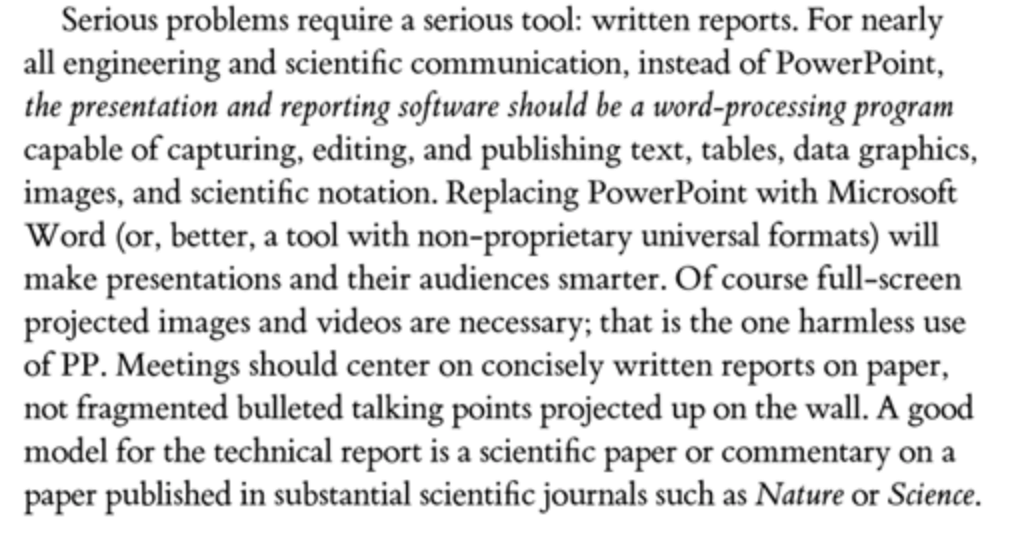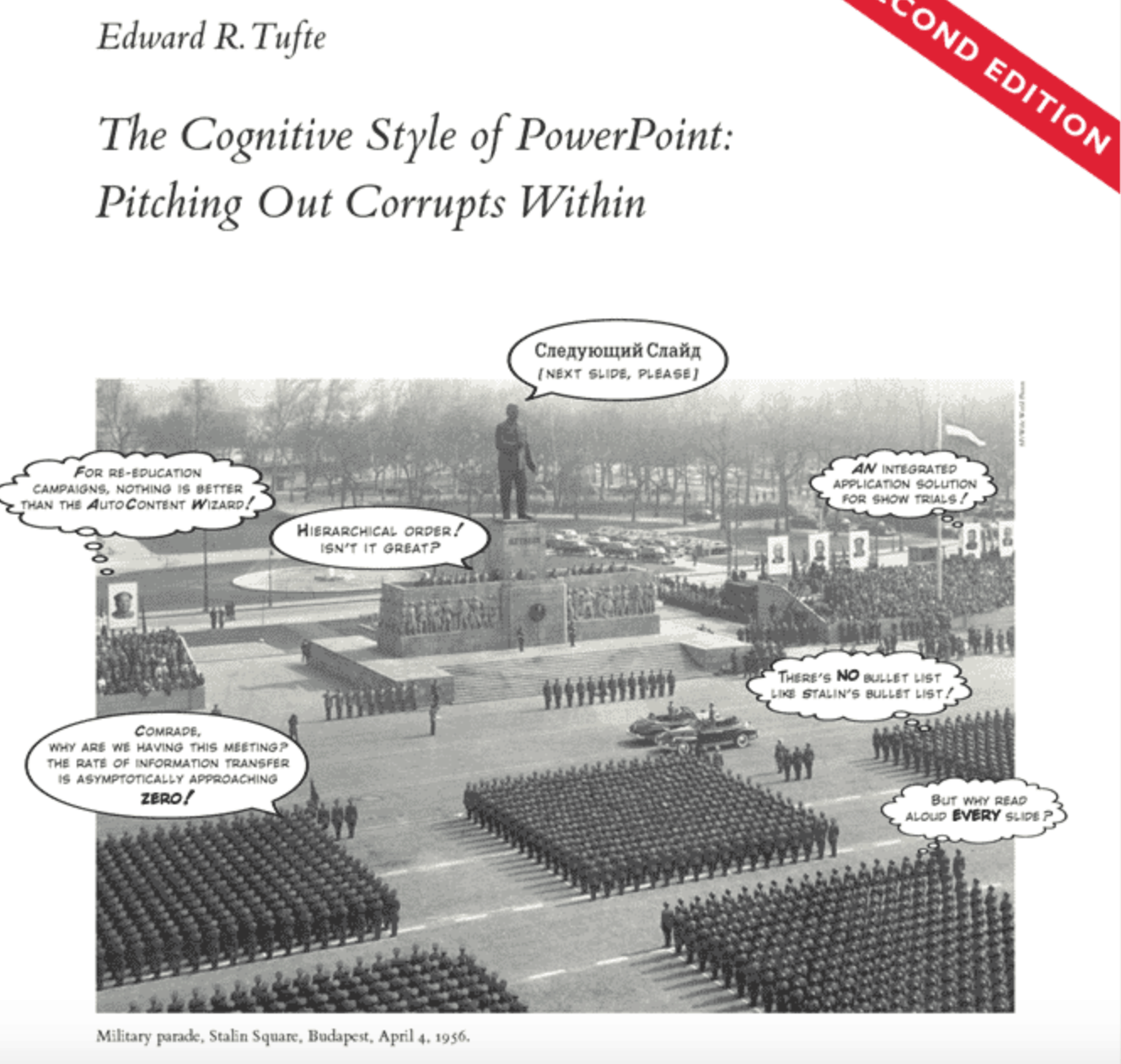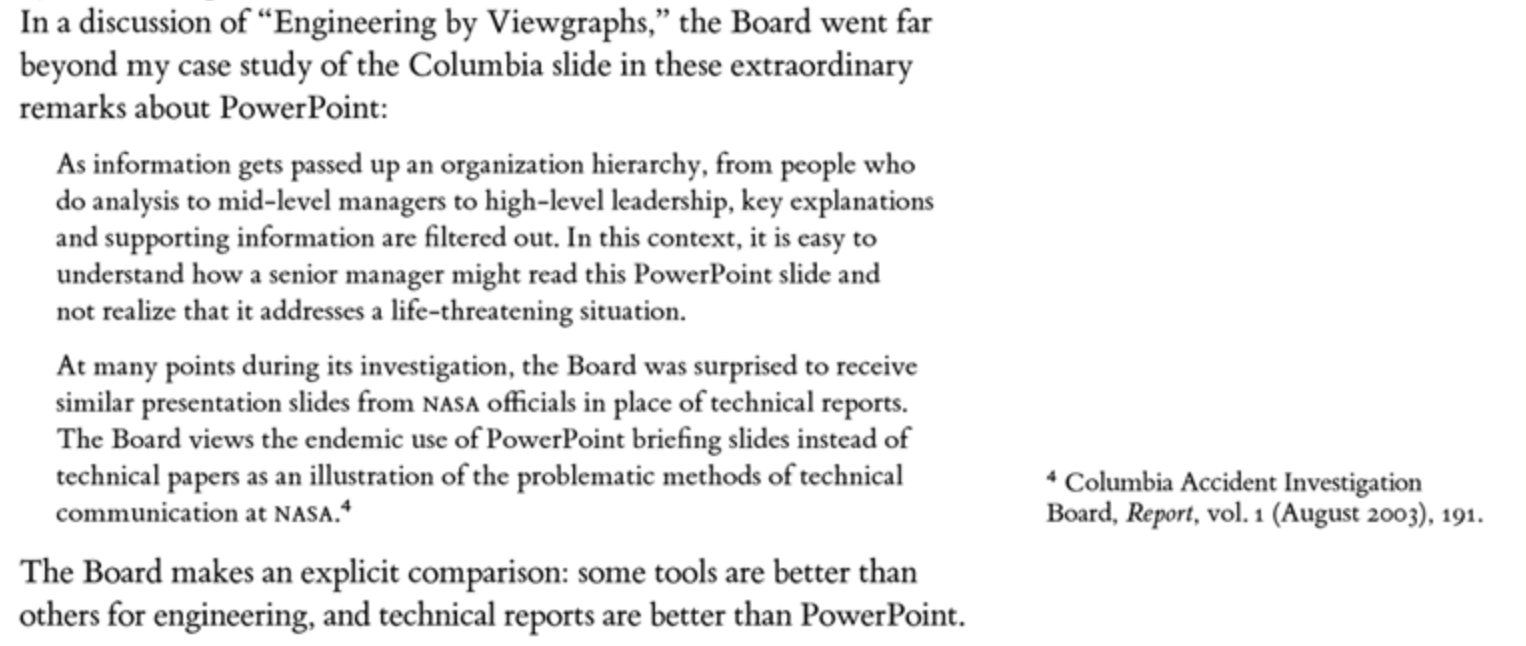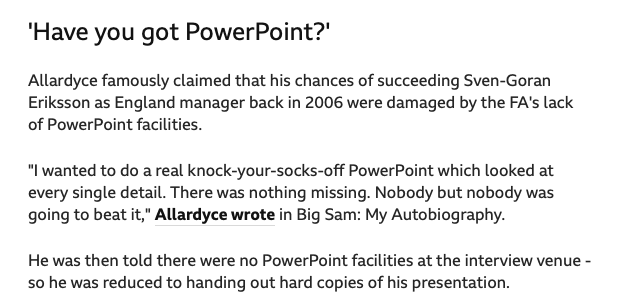It all used to be really straightforward. A report or a paper was a typed, clearly presented A4 paper, which may have some diagrams or appendices but offered a clear and structured narrative – the focus was on share and succinct presentation of argument in order to seek approval for a proposal based on evidence or to share relevant information.
Technology has changed matters though and there has been a growing trend to use PowerPoint instead of word processing software for reports or papers. This is not a good thing.
Over the years there has been much criticism of PowerPoint for presentations, particularly the way in which if it is used poorly it serves as a crutch for a poor presenter, and merely offers a vehicle for reading out text on a screen. For example this Harvard Business Review article is damning about the quality of most of the 30 million PowerPoint presentations delivered daily (!) and recommends a completely different approach to making a memorable engagement.
One of the responses to this fairly widely held view has been more creative presentation software and greater attention being paid to good presentation style and techniques. This though does not necessarily overcome the fundamental problems with PowerPoint – it changes the message.
Not rocket science
A key paper by Edward Tufte on this pulls apart the use of PowerPoint in considering the Columbia disaster in 2003 – ‘PowerPoint Does Rocket Science–and Better Techniques for Technical Reports’. The report concludes:

He also offers a wider analysis of the problems with PowerPoint in this short text with a bold cover:

‘How PowerPoint Makes You Stupid’
Beyond NASA, where the use of PowerPoint was endemic, there has also been a sustained critique of the use of PowerPoint to drive both military and political strategy. A key early text on this is ‘How PowerPoint Makes You Stupid’
With over 500 million users worldwide, Microsoft’s PowerPoint software has become the ubiquitous tool for nearly all forms of public presentation—in schools, government agencies, the military, and, of course, offices everywhere. In this revealing and powerfully argued book, author Franck Frommer shows us that PowerPoint’s celebrated ease and efficiency actually mask a profoundly disturbing but little-understood transformation in human communication.
Using fascinating examples (including the most famous PowerPoint presentation of all: Colin Powell’s indictment of Iraq before the United Nations), Frommer systematically deconstructs the slides, bulleted lists, and flashy graphics we all now take for granted. He shows how PowerPoint has promoted a new, slippery “grammar,” where faulty causality, sloppy logic, decontextualized data, and seductive showmanship have replaced the traditional tools of persuasion and argument.
Both of these examples, Columbia and Iraq, focus on the use of PowerPoint as a flawed and dangerous presentational tool and, as Tufte notes, the Columbia Accident Investigation Board is damning on the use of PowerPoint instead of technical reports for consideration of complex matters in NASA:

Tufte has criticised more broadly the way Microsoft PowerPoint is typically used. In his essay “The Cognitive Style of PowerPoint”, he criticises many aspects of the software:
- Its use to guide and reassure a presenter, rather than to enlighten the audience;
- Its unhelpfully simplistic tables and charts, resulting from the low resolution of early computer displays;
- The outliner’s causing ideas to be arranged in an unnecessarily deep hierarchy, itself subverted by the need to restate the hierarchy on each slide;
- Enforcement of the audience’s lockstep linear progression through that hierarchy (whereas with handouts, readers could browse and relate items at their leisure);
- Poor typography and chart layout, from presenters who are poor designers or who use poorly designed templates and default settings (in particular, difficulty in using scientific notation);
- Simplistic thinking—from ideas being squashed into bulleted lists; and stories with beginning, middle, and end being turned into a collection of disparate, loosely disguised points—presenting a misleading facade of the objectivity and neutrality that people associate with science, technology, and “bullet points”.
The end of the world as we know it?
Despite the rather bullet-pointy list the powerful argument here is about the distracting and misleading nature of PowerPoint as a presenting tool in terms of undermining effective and informed decision-making. A similar concern applies to where it is used in printed form and described as ‘a paper’. The same problems apply and, as Tufte puts it, “serious problems require a serious tool: a written report.” His argument is about scientific or engineering papers but applies equally to business (or indeed higher education) challenges where we need a focus on concise, clear, well argued and properly evidenced papers.
But we seem to get more and more PowerPoint presentations, especially from consultants, masquerading as papers. It may be that universities are the last places to be subjected to this and it is certainly now commonplace in politics and government as the primary means of written communication but it still feels strange and wrong to me when consultants arrive with a pack of spiral bound landscape slides (always in colour, despite the cost of printing) which they describe as a paper, proposal or report. Very occasionally such documents do actually work as effective reports but that is pretty unusual in my experience.
It is certainly the case that you can create nice pictures, graphs and text boxes in PowerPoint but these documents can sometimes be lacking in detail, argument and, often, evidence. They look pretty snappy though which I guess is the point. And of course you can only skate over the pictures, never really getting into the detail of the argument and the whole thing often feels superficial and unsatisfying, especially if said consultants end up sharing their arguments as if delivering a presentation or, worse still, use the slides as a desk-based presentation. You end up with all the disadvantages of PowerPoint and none of the benefits (whatever they might have been) so it is neither one thing nor the other.
A final thought on what happens when there aren’t the facilities to enable a PowerPoint presentation is this recollection from Sam Allardyce who claimed not being able to present had a major impact on his career:
Leaving aside Big Sam’s concerns there’s no way I’m over-reacting here. I for one would happily ban PowerPoint for anything other than presentations and even with these insist on a very low word count per slide. What is your view of PowerPoint for papers? OK or the end of the world as we know it?













Completely agree that a PowerPoint presentation is not a paper. We do, however, use the capabilities of PowerPoint to facilitate our Trustee Board. Whilst “papers” are still produced and linked to, PowerPoint is a handy tool for Executive Summaries, a list of actions and some key points/diagrams that can be pulled out of the paper. Using SharePoint access restrictions means only those required to see certain papers can and time limits can be applied to this access. From an SU perspective, we’ve found it works extremely well for our lay, student and officer trustees, that often are put off by… Read more »
Perhaps the issue here is individuals not using tools that are suitable for the task, rather than any inherent problem with Powerpoint?
I would have also expected a mention of differing learning styles and that walls of black text on a white background actually advantage some learners whilst disadvantaging others; diversity of educational tools should be promoted.
Hey! PowerPoint for presentations, particularly the way in which if it is used poorly it serves as a crutch for a poor presenter, and merely offers a vehicle for reading out text on a screen.
The use of PowerPoint was endemic, there has also been a sustained critique of the use of PowerPoint to drive both military and political strategy.it make easy people to use it.